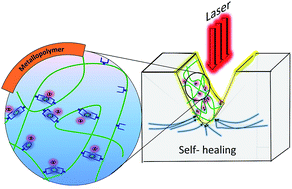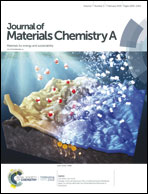Femtosecond laser-induced scratch ablation as an efficient new method to evaluate the self-healing behavior of supramolecular polymers†
Abstract
Tailor-made metallopolymers have the ability to heal surface cracks during thermal treatment. In order to evaluate the self-healing properties in a detailed fashion, a defined way to induce scratches in combination with a quantitative analysis is required. Thus, the previously described qualitative statements of healable metallopolymers are quantified and examined in more detail in the present study. For this purpose, the scratch profiles, introduced by laser ablation or by a scalpel treatment, are measured and the residual scratch area is displayed as a function of the healing time. This quantification is the basis for future healing experiments using the volume for the determination of the healing efficiency. Furthermore, it is also presented that the healing of defects occurs even if the material has been ablated by using the intensity focused energy of a fs-laser. A comparison of the healing efficiencies is performed and the analysis offers insights into the underlying healing process. Furthermore, the reproducibility of the defect formation is very uniform and the depth can easily be tuned by changing the settings. Consequently, laser ablation is shown to be an ideal tool to induce scratches into a material in order to evaluate the subsequent healing behavior in a quantitative fashion.



 Please wait while we load your content...
Please wait while we load your content...